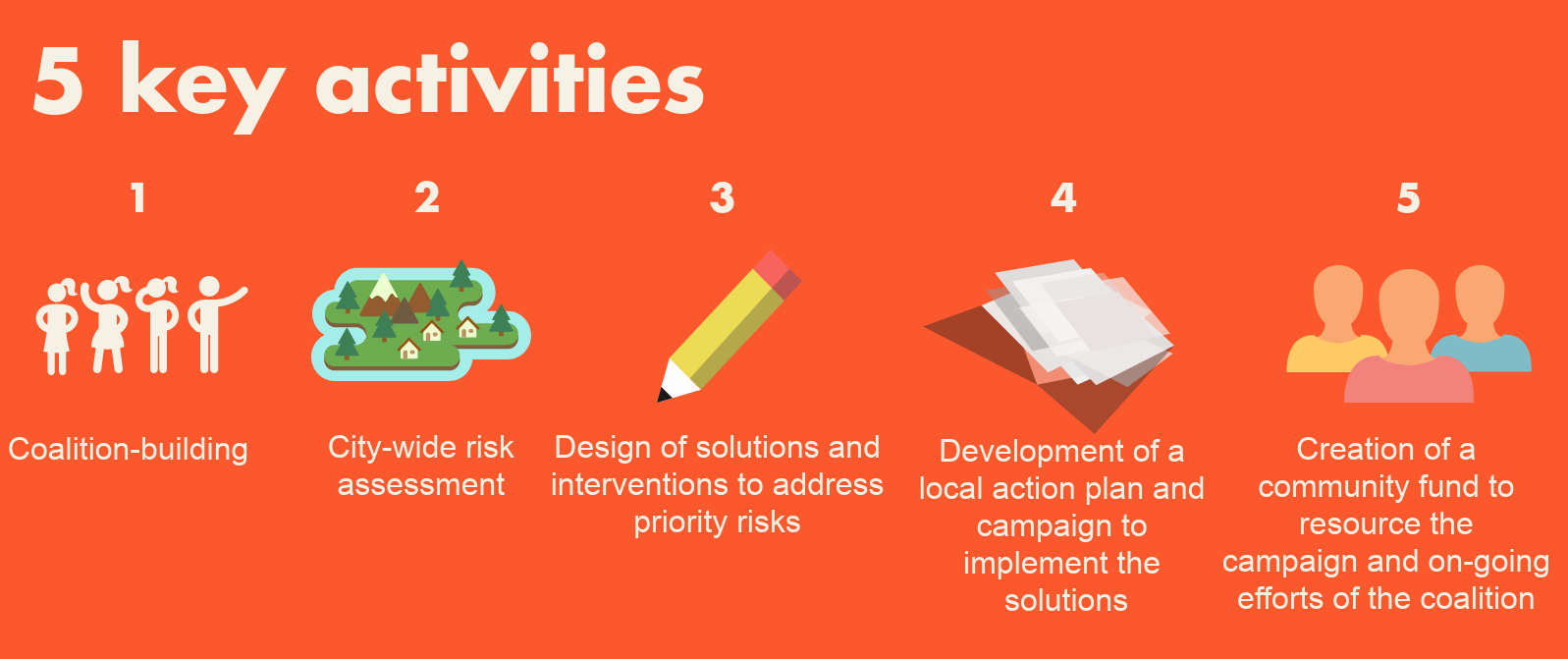Adapting to the impacts of extreme heat in Bangladesh’s labour force

The health and productivity of the workforce in Bangladesh is under increasing threat in a warming world. In this commentary, Lucia Letsch, Shouro Dasgupta and Elizabeth Robinson consider how policymakers can ensure workers are protected from extreme heat while pursuing sustainable development pathways.
Climate change is already inflicting harm on the labour force in many countries around the world, and these effects will intensify in the future as global temperatures continue to rise under climate change. Excessive exposure to episodes of extreme heat, which are becoming more frequent, can have adverse – even fatal – effects on human health. The World Health Organization estimates that between 2030 and 2050, climate change could cause approximately 250,000 additional deaths per year globally due to malnutrition, malaria, diarrhoea and heat stress. These heat-related impacts of climate change on mortality are expected to be most severe in South, East and South East Asia.
The physiological impacts of heat stress can reduce overall human performance. For workers, high temperature conditions may cause them to slow down, make errors more frequently and reduce their ability to carry out physical work – reducing their productivity. They may also be absent more often during periods of high temperatures. In this way, heat exposure reduces both labour supply (number of hours worked) and labour productivity (output during these working hours). This productivity loss can also affect both economic output and individual wages, harming local economies and communities. However, such non-fatal effects of direct heat exposure have received insufficient attention from researchers and policymakers.
Vulnerability to extreme heat in Bangladesh
Bangladesh is a high-risk country for extreme heat hazards. Its tropical and subtropical climate means that both temperature and humidity are high on average, so any increase in temperature is likely to further exacerbate heat-related impacts. The climatic conditions of Bangladesh, combined with the structure of its labour market, make the population especially vulnerable and exposed to heat stress. A large proportion of the workforce engages in outdoor work: in 2019, 38% of Bangladeshi workers were employed in agriculture (the sector most affected by extreme heat), and 21% in industry (including mining, quarrying, construction and manufacturing).
In high-exposure sectors, where work occurs outside and in the sun, effective labour (a combination of both labour supply and productivity) in Bangladesh is projected to decrease by 16 percentage points under a scenario where average global temperatures rise by 1.5°C. This increases to 29 percentage points under a 2°C warming scenario, and 47 percentage points under a 3°C warming scenario. Effective labour in low-exposure sectors (where work occurs inside or outside in the shade) in Bangladesh is also projected to decrease under all warming scenarios, although to a lesser extent.
There is a particular risk to the over four million workers employed in Bangladesh’s ‘ready-made garment’ industry, of which 80% are women. During peak production hours in July, temperatures in these factories already pose high risks to workers, and are also likely to be associated with productivity losses.
Policies and plans for worker protections
Bangladesh has introduced several policies and plans aimed at improving working conditions in general (see this list for more information). The Bangladesh Labour Act was passed in 2006, containing standards on issues such as minimum wage, wage payments, health, safety and occupational hazards. However, the International Trade Union Confederation’s Global Rights Index gave Bangladesh a score of ‘5’ (using a scale of 1–5, with 5 being the poorest), meaning there is no guarantee of rights in the country. Inefficiency in the relevant institutions contributes to insufficient inspection of factories and penalties for non-compliance with policies and regulations.
Several plans and policies in Bangladesh, such as the National Occupational Safety and Health Policy and the Health National Adaptation Plan, specifically aim to protect the health of the labour force. The threat of climate change to workers’ health is explicitly recognised in the National Adaptation Programme of Action, which identifies increased mortality from heat stress as one of the main climate change vulnerabilities in Bangladesh. However, there remains a lack of specific measures to ensure that workers are protected from the negative impacts of climate change.
Improving working conditions in times of high heat stress not only benefits workers but it can also reduce productivity losses due to climate change. It has been estimated that 22–68% of the global economic losses due to decreased labour productivity can be avoided through adaptation measures. Policymakers have an important role in explicitly addressing adaptation to extreme heat, in part because employers may not be fully aware of the negative consequences of climate change, and even if they are, they may not have sufficient incentive to implement actions that protect workers. Awareness of labour rights is generally low among employers and workers in Bangladesh, creating a further barrier to implementing labour protections.
Here we outline four areas where there is high potential for adaptation measures to reduce the negative impacts of climate change on labour supply and labour productivity in Bangladesh.
Changing working conditions
The negative impacts of heat stress on workers can be limited by shifting working hours to cooler times of the day and by ensuring that workers take frequent breaks to cool down and rehydrate. Changing working hours could however have unintended consequences on workers’ health, such as negatively affecting sleep patterns or increasing exposure to dengue-carrying mosquitoes if more time is spent outdoors in the evening. These effects could outweigh the productivity and health benefits if not taken into account.
Although Bangladesh has made commitments to ensure worker protections, enforcement is currently weak. The implementation of adaptation measures that focus on changes in working conditions will require effective and transparent institutions that enforce health and safety regulations.
Adjustments to building design
Heat conditions inside factories can be improved with adequate cooling systems, including air conditioning and passive cooling. Retrofitting the rooftops of factories, including adding green roofs, rooftop shading, and painting roofs white, has also been found to effectively reduce high indoor temperatures. Renovating and retrofitting buildings requires financial resources and air conditioning depends on an adequate energy supply; factories may not be able to invest in such adaptation measures without financial support.
Climate-smart urban planning
Urban planning that includes adaptive measures such as urban greening (the creation of green spaces to cool urban areas) and electrifying public transport will be crucial for building resilience to heat stress in a rapidly urbanising Bangladesh. In the National Adaptation Plan for 2023–2050, green infrastructure is among the proposed adaptation measures for the threat of extreme heatwaves, but few projects have been planned so far.
Mechanisation
Some forms of human labour can be substituted through mechanisation, including in the agricultural sector. While there are some instances of this in Bangladesh, most agricultural activities are still carried out manually. To reduce the need for heavy labour while also ensuring the sustainable development of the agricultural sector, sustainable mechanisation – which preserves natural resources and limits greenhouse gases – needs to be expanded. A drawback to agricultural mechanisation also is that it can lead to workers losing their jobs. To avoid resulting increases in unemployment and inequality, policymakers will need to take a ‘just transition’ approach, helping to reskill workers and creating new, decent job opportunities.
Adaptation in the context of sustainable growth pathways
Any adaptation measures to heat risk need to be considered in the context of economic growth, prosperity and the global need to reduce emissions and limit global warming to below 2°C. Compared to higher-income countries, Bangladesh’s contribution to climate change is very small. Strong mitigation actions from high-emitting countries will therefore be crucial to limiting the negative effects of climate change.
Bangladesh has experienced rapid economic growth in recent decades, driven by the expansion of its industrial sector, including export-oriented sectors such as the ready-made garments industry. These sectors tend to be major greenhouse gas emitters, contributing to climate change, which in turn creates conditions that threaten the health and productivity of the labour force.
Industries can improve their environmental performance while also creating social benefits and economic growth. In the brick manufacturing industry in the Dhaka region, for example, energy efficiency improvements reduced emissions intensity and lead to cost savings of an estimated US$1.8 and $3 million annually between 2015–2020. Further, the cumulative health cost savings during the same period were estimated to be between $126 and $234 million.
The importance of decent work in achieving sustainable development has been emphasised in the UN Sustainable Development Goals (SDGs). Shifting Bangladesh’s economy to a sustainable growth pathway, which ensures the health and protection of the labour force while also minimising the environmental impact, could help build resilience to the negative impacts of climate change. Adopting cleaner production methods can further protect the health of the workforce, deliver significant cost savings and support Bangladesh in achieving its aim of becoming an upper-middle income country by 2031.
The implementation and enforcement of regulations ensuring adequate protection of workers from heat stress can contribute to a just transition to a low-carbon economy. A more detailed and nuanced understanding of the health implications of heat on workers is an opportunity for Bangladesh to improve the welfare of the most vulnerable workers and the Bangladesh economy as a whole.
This story was originally published on the website of the Grantham Research Institute on Climate Change & the Environment, LSE. You can access the original story here.



